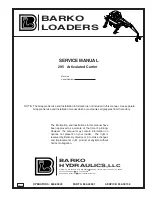
Synthetic rope is subject to elongation, or stretch. As the distance between the anchorage and the grab increases, the portion of the rope
that is subjected to loads increases, thereby increasing the effects of elongation. Elongation can be as much as 10% for rope in wet
conditions or when loaded to 408 kg (900 lbs). Consideration of elongation must be considered when estimating fall clearance distances.
See Figure 4.
5.3 Swing Fall: Swing falls occur when the anchorage point is not directly above the point where a fall occurs. The force of striking an
object in a swing fall may cause serious injury. In a swing fall, the total vertical fall distance will be greater than if the user had fallen
directly below the anchorage point, thus increasing the total free fall distance and the area required to safely arrest the user. Minimize
swing falls by working as directly below the anchorage point as possible. Move the anchorage as required. Never permit a swing fall if
injury could occur. If a swing fall situation exists in your application consult a Competent Person before proceeding. See Figure 5.
A Anchorage
B Fall Arrester Connecting Subsystem (FACSS)
C Walking/Working Surface
D Swing Fall Impact after a fall event
E Next Lower Level or Obstruction
Figure 5 - Swing Fall Hazard
*A
Stretch
Stretch of Vertical Lifeline
Stretch = Length of the VLL from the Anchorage Connector to Fall
Arrester position on the VLL multiplied by 10%
B
0.9 m
(3 ft)
Length of Shock Absorbing Lanyard
Original working length before a fall event occurs/before activation
of energy absorber
C
1.2 m
(4 ft)
Elongation/Deceleration Distance
Maximum allowable amoung of elongation that may payout from
the energy absorber upon activation during a fall event
D
0.3 m
(1 ft)
Harness Stretch and Dorsal D-Ring Shift
Combined amount of harness webbing elongation and dorsal back
D-Ring up-shift during entire fall event
E
1.5 m
(5 ft)
Height of Dorsal D-Ring
Typical average height of the dorsal D-Ring on a user’s full body
harness, measured from the walking/working surface up
F
0.5 m
(1 1/2 ft)
Safety Factor
Added length for other factors such as an improperly adjusted
harness, actual worker height or worker weight
*G
Add
A through F
Total Minimum Clear Fall Distance Required
* Must calculate the distance for A
1. Anchorage 2. Walking/Working Surface 3. Next Lower Level or Obstruction
Figure 4 - Minimum Required Fall Clearance Calculation
CMVLL01 Rev A
041020
6







































